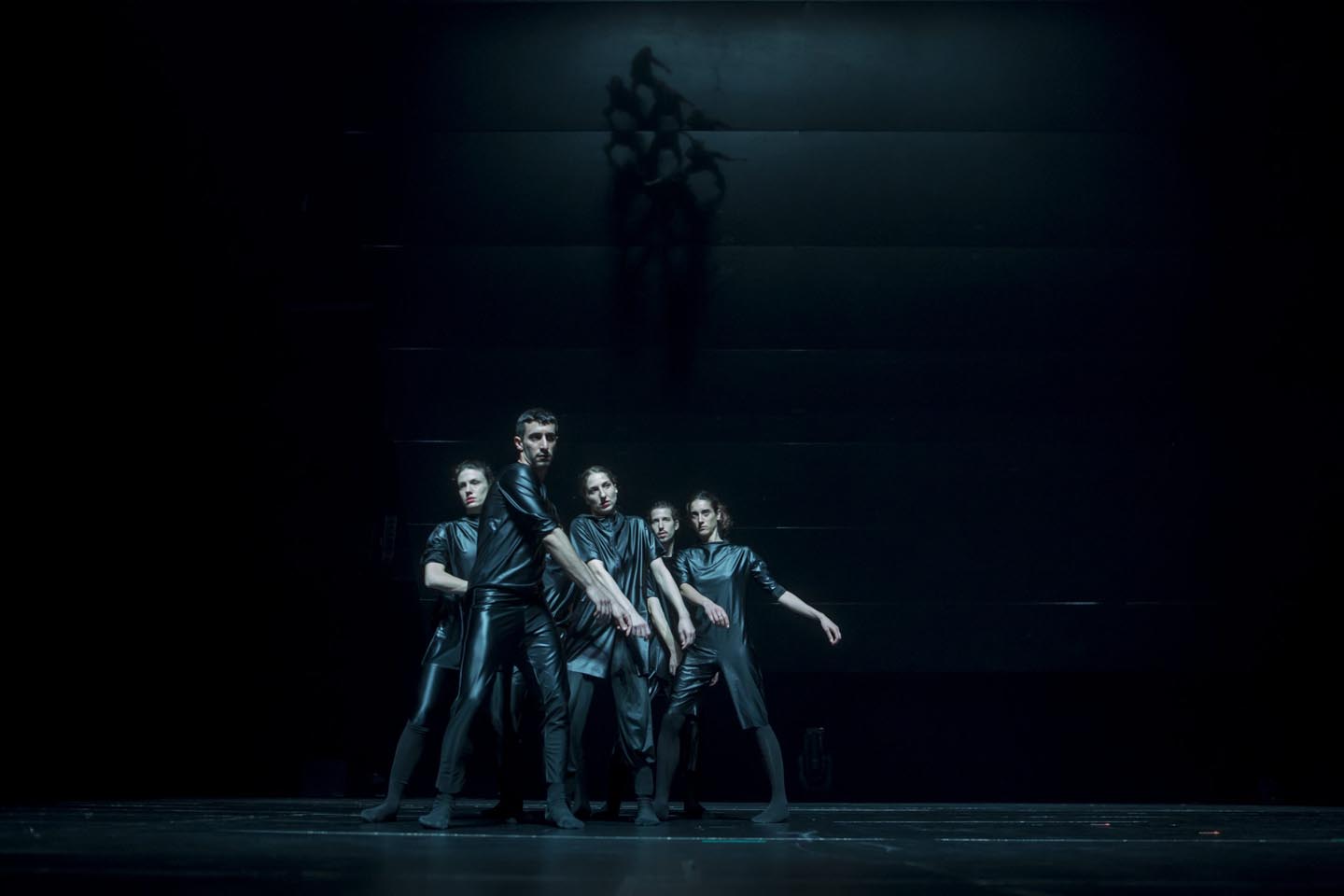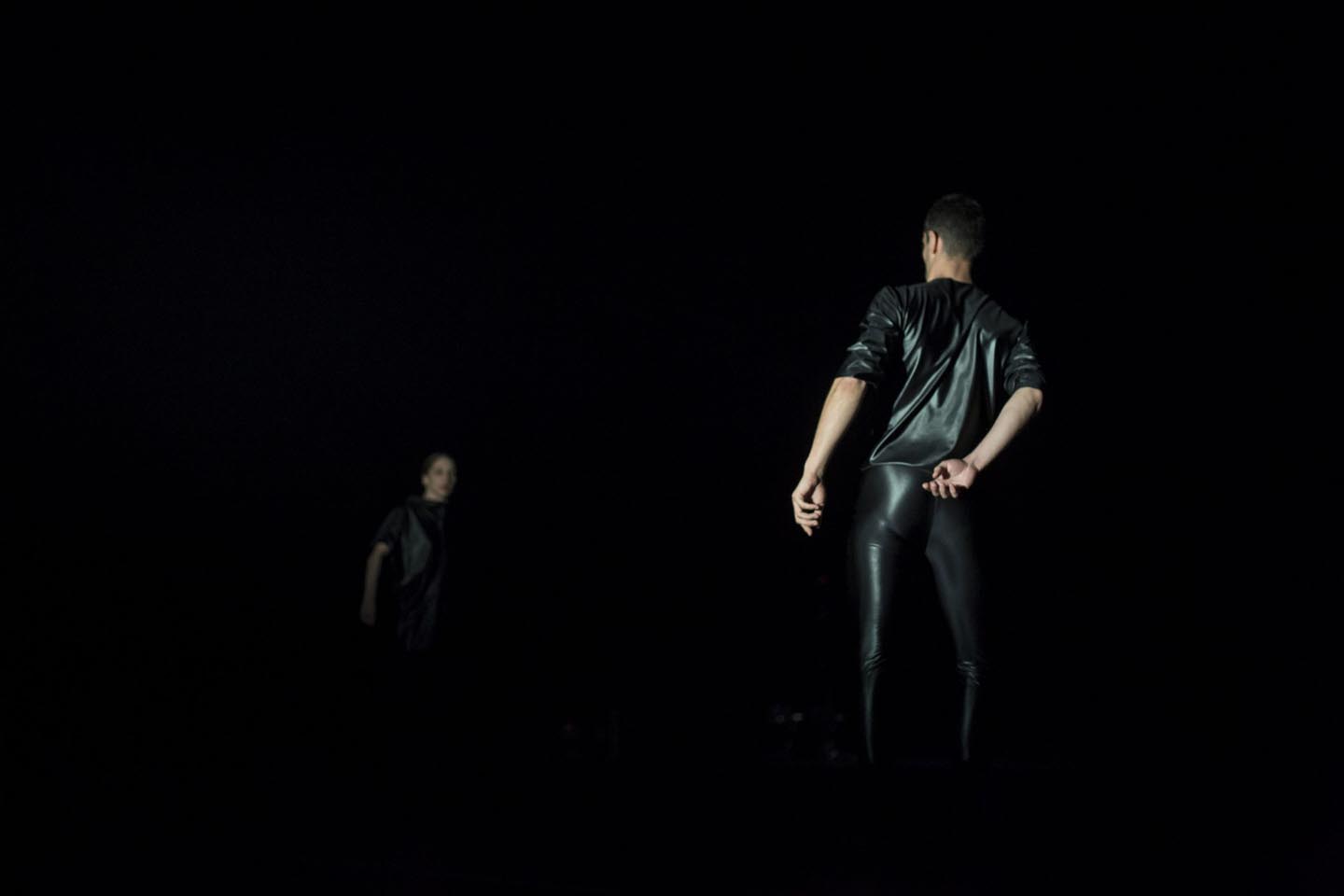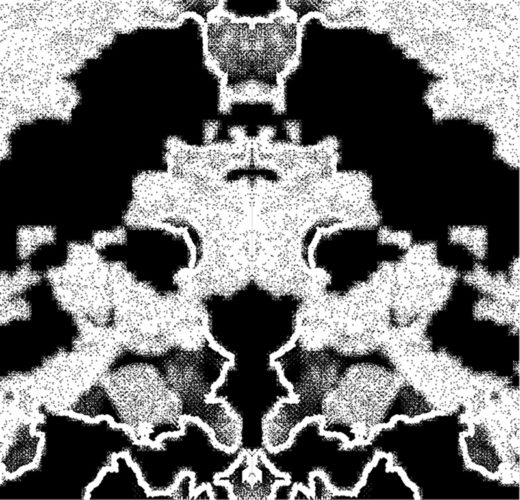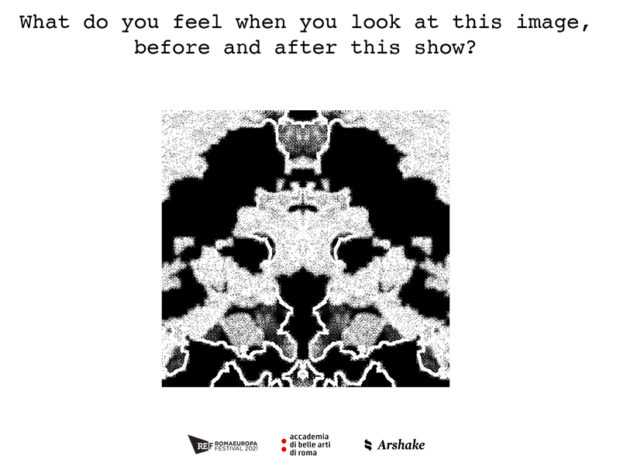What noise does silence make?
When silence becomes familiar. You realise that it is not actually silence. Your ear gets used to it, becomes sensitive and starts to perceive noises which are less distant and muffled. And the sound becomes nearer and the rhythm faster.
Everyone has had the experience of moving around in the dark at some point – an initial feeling of discomfort, a destabilising experience. Then through force of habit the pupils become dilated and the eye gradually becomes accustomed to the lack of the light, so that it is hardly needed any more. What colour is darkness?

Larcen C by Papadopulos is a sinuous, perpetual dance: a continuous multiplication of bodies, moving fluidly, almost in unison. And the scene flows, the movements are amplified, and the darkness becomes less dark.
Nature which appears in its fragility.
The choreographer’s intention is to stage the majesty of nature worn down by human action. And it does so by borrowing its title from geography. Larcen C, a glacier along the east coast of the Antarctic Peninsula, is imperceptibly disintegrating and collapsing as the planet continues to warm.
Human action is represented by the ever-increasing rhythm of the music, pounding and repetitive to the point of obsession.
The marvellous costumes are made of silky, shiny and ethereal fabrics that reflect light, that live on light, leaving small parts of the performers’ bodies uncovered. In this way a pink forearm, a calf and a stomach appear to be the only points of colour in the scene. The pink of the flesh against a black background, on dark, iridescent fabrics testify that the scene is not empty, that the space is inhabited and that human action continues.
There is still precision in the lighting, so much so that the spectator is enchanted by fascinating Chinese shadows. Almost hypnotised, you get distracted by the dance, the bodies and the music and begin to follow the flow; bodies are projected onto surfaces and at the side of the stage down to the stalls the deformed movements of things can be seen.

The white of the light and the black of the scene – non-colours prevail. The darkness starts to become less dark and the black less black. An almost spatial light, appearing less distant and ever more intrusive. The same non-colours and cold light as in Kubrick’s Space Odyssey, almost as if to foresee the end of the show.
The music becomes less monotonous and repetitive, the movements reflect the sound and the bodies of the performers appear in their totality against the light.
What noise does silence make? What colour is darkness?
Alessandra Gabriele


images (cover 1-3): Christos Papadopoulos, Larsen C, © Pinelopi Gerasimo for Onassis Stegi (4-5) images realized for AUDIENCE ON STAGE: Letter to the emancipated spectactor in order to investigate his her paths of imagination.
Texts and videos narrating each show are the outcome of an active relationship which has been established with the spectators, in search of the identity of the “emancipated spectator”. The students of the Academy who created the project built a relationship with some of the spectators chosen from those present at the events, using post and email. They later created a translation of the show which took the form of words and images suggested by the spectators.
Who is the “emancipated spectator”?
According to Jacques Rancière, you are. It is us who, with “stories and performances, can help change something in the world we live in”.
Text and video of this article were realised on occasion of Larcen C by Christos Papadopoulos at Audiotorium Parco della Musica on November 16 2021, within within Romaeuropa Festival 2021 as part of AUDIENCE ON STAGE, fourth edition of BACKSTAGE / ONSTAGE ‘, a multimedia editorial project realised in a partnership between the Rome Fine Art Academy, Romaeuropa Festival and Arshake.
For the 2021 edition, BACKSTAGE / ONSTAGE, has moved its focus to concentrate on the spectators of the Romaeuropa Festival, their behaviour and way of relating to the performances, their interest and the effect that this produces. The survey was carried out transversally, covering the different performance genres at the festival, from dance to drama and music. AUDIENCE ON STAGE examined the entrances, lobbies and corridors of theatres, stalls, boxes, mobile phones and online event screens, searching for the gaze of the so-called emancipated spectator, i.e. he or she who finds a new kind of contact and closeness with others in the theatre, but also discovers a new connection with their own active existence.
Backstage / Onstage: the project is realised with a partnership between the Rome Fine Arts Academy, Romaeuropa Festival and Arshake
Credits 2021- AUDIENCE ON STAGE: Video: Walter Maiorino, Eleonora Mattozzi, Alessia Muti, Francesca Paganelli; Eleonora Scarponi. Testi: Chiara Amici, Domiziana Febbi, Alessandra Gabriele, Martina Macchia, Alessia Mutti.









































